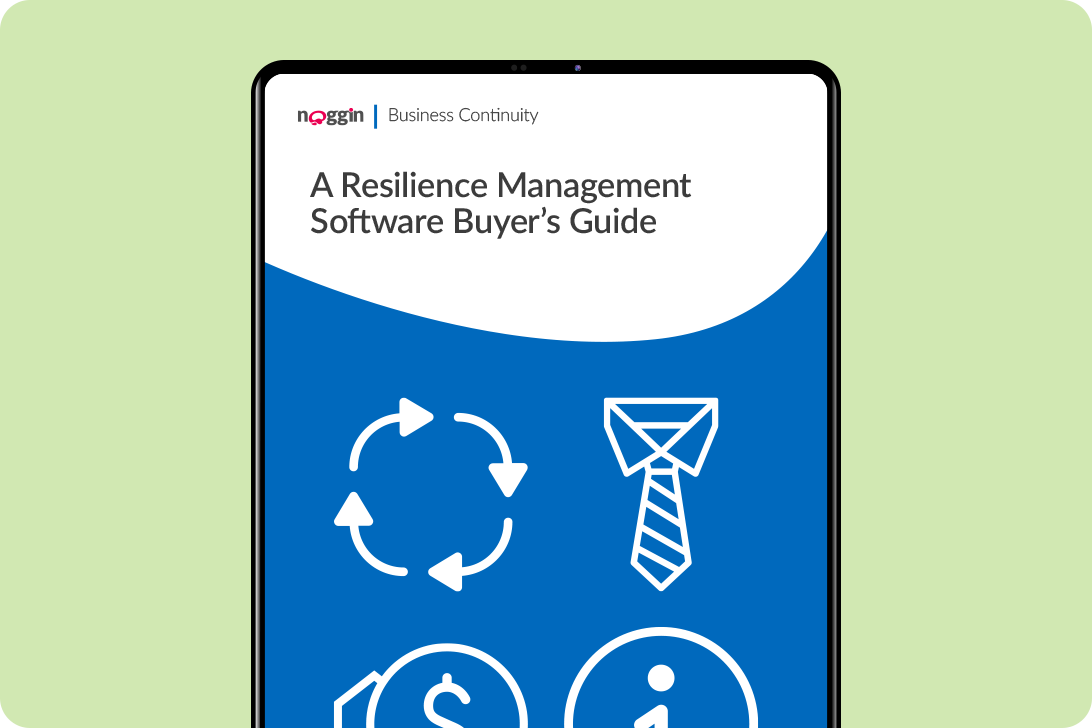Organizations today face a litany of challenges to resilience, with the popularity of the hybrid workforce fragmenting incident response, as well. What can be done to bet...
Request a Demo
Fill in the form below and we will contact you shortly to organised your personalised demonstration of the Noggin platform.
Meet Noggin
An integrated resilience workspace that seamlessly integrates 10 core solutions into one, easy-to-use software platform.
The Noggin Platform
The world's leading integrated resilience workspace for risk and business continuity management, operational resilience, incident & crisis management, and security & safety operations.
Industries
Explore Noggin's integrated resilience software, purpose-built for any industry.
The Noggin Blog
- Home
- noggin partners
noggin partners
Latest Articles
4 Digital Capabilities to Consider in Business Continuity Planning Software
Companies confronting an unprecedented era of compounding, consecutive, and concurrent crises.
The question then turns to, what business continuity...
Mandatory Cyberattack Reporting: A Harbinger of the Future?
As cyberattacks increase will regulators demand mandatory cyberattack reporting?
In one sector, they likely will.
Which one? Read on to find out.
What is Crisis Communication? Crisis Communication Strategies
When crisis response goes awry, poor communication is often at fault. Poor communication typically takes any of the following forms:
- Withholding...
5 Reasons to Upgrade Your Emergency Management Platform
Organizations today face a litany of challenges to resilience, with the popularity of the hybrid workforce fragmenting incident response, as well....
Operational Risk Management: Overview & Guide
What’s one of the most significant risks businesses face today? That would be operational risk.
Don’t think so? Consider the fates of Enron,...
The Benefits of Operational Risk Management
Everyone knows that running a business involves risk. But not all risks are created equal.
Business leaders will encounter certain risks that are...
6 Types of Workplace Hazards
Workplace injuries and illnesses don’t come out of the blue. They’re often the product of workplace hazards that haven’t been successfully...
BCM Lifecyle: 6 Stages of the Business Continuity Lifecycle
In the age of constant crisis, companies understand the importance of business continuity in continuing the delivery of products or services...
What Clients Should Know about Effective Governance of Operational Resilience (OpRes)
Interest in operational resilience has no doubt boomed among your clients, whether they’re in a heavily regulated industry or not. But an OpRes...
Strategies to Protect Critical Infrastructure in Times of Heightened Threat
Attacks on critical infrastructure assets are on the rise. And now, national publics are concerned. A staggering 81% of U.S. residents are worried...
6 Ways Business Continuity Management Software Can Prepare Your Organization for Any Disruption
Nowadays, disruption is a matter of when not if.
4 Digital Capabilities to Consider in Business Continuity Planning Software
Companies confronting an unprecedented era of compounding, consecutive, and concurrent crises.
The question then turns to, what business continuity...
What Clients Should Know about Effective Governance of Operational Resilience (OpRes)
Interest in operational resilience has no doubt boomed among your clients, whether they’re in a heavily regulated industry or not. But an OpRes...
Business Continuity Best-Practice Guidelines for Your Clients
We’re seeing big increases in the number of organizations certified to ISO 22301. Your clients are likely to figure among those ranks. But even if...
Creating a Business Case for Integrated Resilience Management Software
By now, most organizations have programs to address the varying aspects of resilience management. They also have individual platforms in place for...
Three Capabilities to Consider in a Resilience Management Platform
In resilience, we’re witnessing a paradigm shift away from protecting individual organizations and towards preventing incidents from impacting...
Business Continuity: Engaging Stakeholders
In the wake of COVID, businesses have likely been thinking hard about business continuity. Risk managers have updated continuity plans. But planning...
Digital Exercise Management Capabilities for Your Clients
Before COVID, companies admitted lax exercise management protocols for crises and business continuity disruptions. After? Things have improved but...
Organizational Resilience vs. Business Continuity
Getting to know ISO 22316 and ISO 22301
Despite some important overlaps, organizational resilience and business continuity are distinct practices....
How to Educate Clients on ISO 22361
With everything going on in 2022, clients likely missed the release of another, international standard. But this one’s important, especially as the...
Client Software Purchasing Habits Could Be Inhibiting Resilience
When it comes to your client’s enterprise software, IT and CIO bosses still control the purchasing agenda. And they gravitate towards legacy...
The Latest Crisis Management Guidance for Your Clients
Your clients might be familiar with security and resilience-promoting best practices, such as organizational resilience (ISO 22316), crisis testing...
Resilience Best Practices Your Clients Should Consider
Your clients no doubt intend to expand their contingency programs, focusing on impacts, connected risk appetite, and tolerance levels for disruption...




